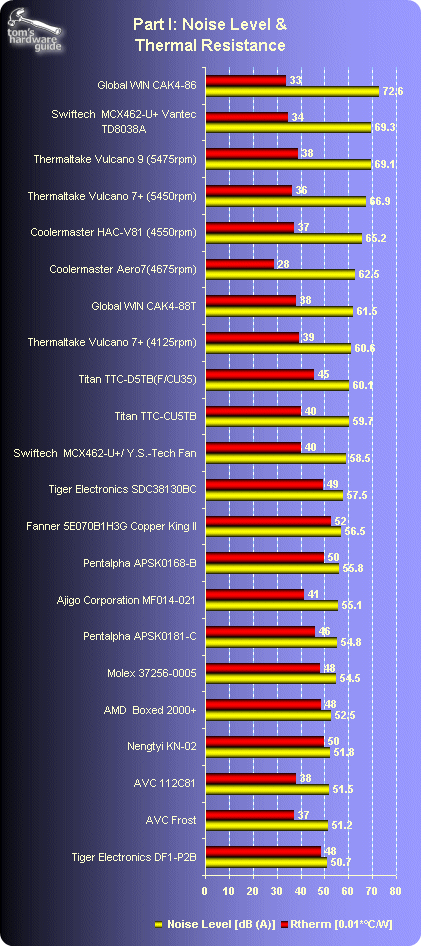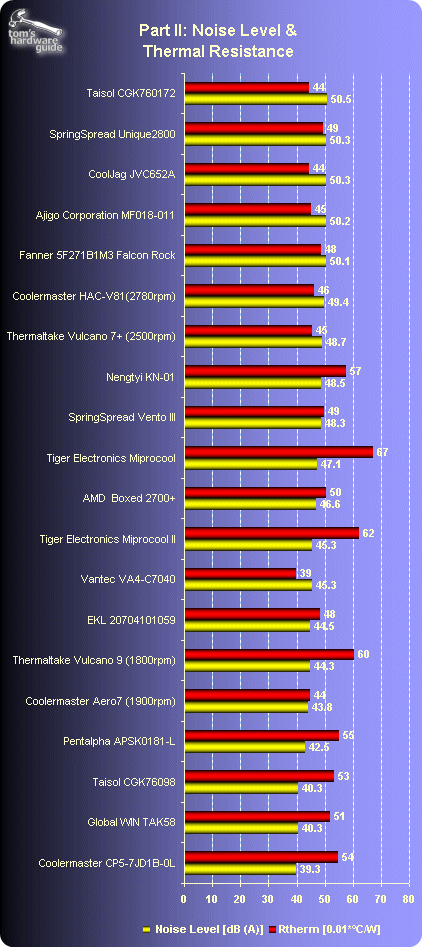How Good Are AMD's Bundled Coolers For The Athlon XP ?
Loud Or Quiet, Hot Or Cold: A Direct Comparison Of Several Coolers
To help you rank the tested coolers by effectiveness, we have listed the results from this test next to those from the previous test.
Please note that the noise level measurements were taken with the side panels removed, at a distance of approximately 35 cm from the fan wheel and with an ambient noise level of 34 dB(A). Your levels may be considerably below our results with the side panels, and your sound insulation, in place.
Thermal resistance is the key variable. It is the measure of the effectiveness of the cooler. We calculated it from the readings for the thermal power of the processor, PV, the die temperature, TD, and the ambient temperature, TA, using the following equation:
Rtherm =(TD -TA )/PV in °C/W
Note that the die temperature is just an operand: it is heavily dependent on the CPU's thermal loss, which can vary wildly for any one particular clock speed setting. "Our" Athlon XP 2400+ managed a maximum thermal power score of 57 watts. According to the data sheet, though, the Athlon XP 2400+ can get up to 68 watts. If you were to run these two 2400+ CPUs using the same cooler with a thermal resistance of, say, 0.5° C/W, the die on the THG 2400+ processor would be some 5.5° C cooler. This simple example clearly demonstrates that thermal resistance is the key variable.
Get Tom's Hardware's best news and in-depth reviews, straight to your inbox.
Current page: Loud Or Quiet, Hot Or Cold: A Direct Comparison Of Several Coolers
Prev Page A Fresh Breeze Blows From CeBIT: Coolermaster Aero7 Next Page Specifications: Coolers At A Glance
